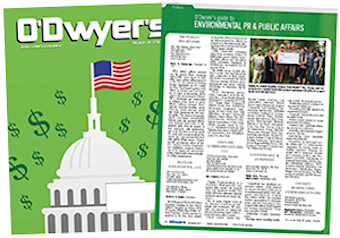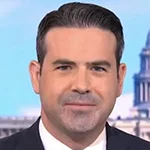|
|
For insurance providers, healthcare companies and employers throughout the United States, a new health policy regime brings with it numerous questions and challenges. However, with a Congressional majority that has yet to come to a conclusion as to the exact mechanisms and policies they would put in place to help ensure health coverage in the absence of the ACA, these organizations can find significant opportunities to help shape the next generation of healthcare policy — if they approach the debate with the right tools and intelligence.
|
|
As Congress gets into gear, we expect to see vigorous debate around the “repeal and replace” issue with an untold number of organizations, interests and political forces vying to find their seat at the table. How, then, can organizations make sure their communications and government affairs strategy is best positioned to ensure their voice is heard and not drowned out in what is sure to be a policy feeding frenzy?
In order to meet this challenge, these groups must be prepared to use public sentiment to their benefit. Any legislative effort to significantly change how healthcare is provided in the United States will surely be met with public outcry. On one side, there are the long-standing opponents of Obamacare who expect to see Congress make good on their promise to vacate the ACA. On the other, there are those who will claim this move jeopardizes health coverage for Americans. Smart companies will find ways to piggyback on public sentiment and use these forces to help push their policy agendas.
As policies and the debates around them crystalize, organizations will need to be prepared to seed messages through owned, earned and paid channels—social media, grassroots outreach and media placements, among other channels—that let Americans know how they stand to benefit or be hurt by specific aspects of health policy. Coupled with a strong echo chamber to build momentum, organizations will be able to use public pressure to nudge members of Congress in the right direction.
To this end, effective organizations will be prepared with messaging that resonates not just with policymakers but with the voters the policymakers look towards to keep them in office.
If “Repeal and Replace” becomes a reality, and the “replace” side of that equation remains an open question, we can expect some uncertainty across the healthcare industry. However, for organizations looking to become strong voices in the healthcare policy space, this could offer a new opportunity to claim a seat at the table. By effectively demonstrating that a set of policies will be good for the economy, good for key industries and popular with voters, even previously quiet voices can stake a claim in the debate.
One of the key lessons of the 2016 campaign is that those looking to advance a political message must play to voters’ immediate interests, constantly reinforcing how a particular promise or policy will improve individuals’ lives. This means organizations will not only need to convince policymakers that their agenda represents smart policy, they must also be prepared to equip them with a narrative that they can bring home to their voters.
Washington, DC may seem like a different place these days, but it holds true that the primary drive of any politician is to keep his or her job secure. With a GOP Congress that wants to move forward with ACA repeal without jeopardizing its majority in the 2020 midterms, and a White House that rode populist support to victory, the policymakers tasked with designing the new healthcare regime will be looking for policies that keep voters and businesses on their side. For organizations and companies, this means they must be ready to sell their healthcare vision to influencers with a set of messages, proof points and third-party validators that demonstrate it will not only be good policy, but popular policy.
Of course, your message only matters if you can ensure it gets heard by the right people. Thus, smart organizations must be prepared to embrace a tactical approach to influence — looking at the most important players around each issue and pinpointing who they listen to and what moves the needle for them.
With a slew of new faces and interests in Washington, DC, message targeting will become a harder and more important task as the healthcare debate ramps up. No longer is it enough to rely on an old network of former colleagues and business associates, especially as the new administration places a number of political outsiders in key positions. Instead, detailed intelligence can give you deep insights into exactly what factors matter to the individual decision makers who will set the agenda for healthcare reform.
Equipped with this data, you can then take targeted actions that allow you to saturate the channels these influencer care about most with the messages you wish to get across — the TV they watch, the papers they read, and the networks they operate within. By doing this you can efficiently create an environment in which your message is pushed from a number of angles directly towards the individuals you most wish to influence.
Whatever shape healthcare policy takes, organizations that seek to make their voices heard will need to commit to a robust plan guided by intelligence and designed to meet the politics of our time. By approaching this vibrant and messy debate with a strong message, a deep understanding of the political climate and detailed insights into the players who matter most, organizations can ensure they are well positioned to shape healthcare policy in 2017 and beyond.
***
Nick Horowitz is an account director at Racepoint Global.

 Nick Horowitz
Nick Horowitz

 Husch Blackwell Strategies has added FleishmanHillard alum Michael Slatin as a principal in its public affairs group.
Husch Blackwell Strategies has added FleishmanHillard alum Michael Slatin as a principal in its public affairs group. Rory Cooper, a veteran Republican operative and policy specialist, has joined Teneo’s Washington office as senior managing director in its strategy & communications practice.
Rory Cooper, a veteran Republican operative and policy specialist, has joined Teneo’s Washington office as senior managing director in its strategy & communications practice. Brian Fallon, who served as national press secretary for Hillary Clinton’s 2016 presidential run, is signing on next month as Vice President’s Kamala Harris’ campaign communications director.
Brian Fallon, who served as national press secretary for Hillary Clinton’s 2016 presidential run, is signing on next month as Vice President’s Kamala Harris’ campaign communications director. TikTok is nothing more than a Chinese propaganda tool that poses “a grave threat to America’s national security and, in particular, impressionable children and young adults,” say two Congressmen who want the platform registered as a foreign agent.
TikTok is nothing more than a Chinese propaganda tool that poses “a grave threat to America’s national security and, in particular, impressionable children and young adults,” say two Congressmen who want the platform registered as a foreign agent. Public Strategies Washington has added Abbie Sorrendino, a former aide to now Senate Majority Leader Chuck Schumer.
Public Strategies Washington has added Abbie Sorrendino, a former aide to now Senate Majority Leader Chuck Schumer.


 Have a comment? Send it to
Have a comment? Send it to 
No comments have been submitted for this story yet.